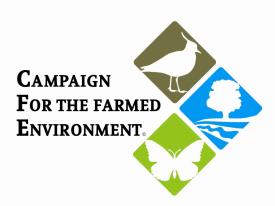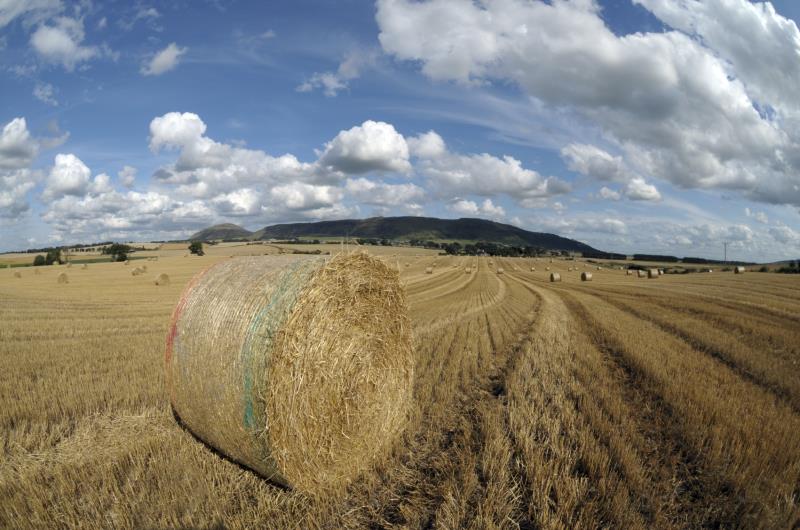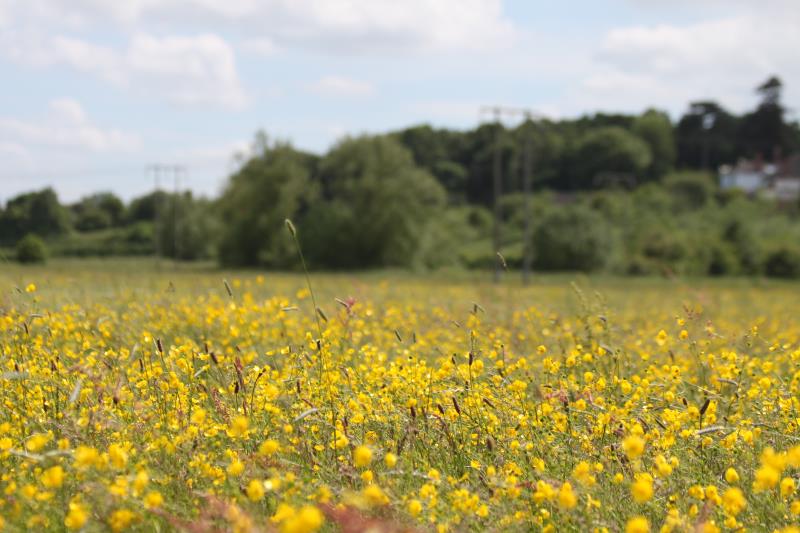 Name: Tamara Hall
Name: Tamara Hall
Region: East Yorkshire
Farm: Molescroft Grange, Beverley
Size: 1250 acres
Background:
Molescroft Grange is situated on the edge of Beverley in East Yorkshire and is an arable farm.
The soil types vary from medium clay loam to heavy clay with areas of black or sandy clay. Much of the land has drainage issues due to not being pumped any more.
The farm operates a seven-year rotation of winter wheat, winter oilseed rape, winter wheat, peas, winter wheat, winter barley/second wheat and winter oilseed rape.
Red wheat has been grown in the past. The farm used to operate a six‑year rotation but have changed to put winter oilseed rape in twice as it has its benefits as a break crop and operating a direct drilling system helps spread the workload on machinery.

There are also 2.5 acres of allotments at Molescroft Grange. They are run as a separate not-for-profit company. This company rents the field from the main farm and lets it out to the individual plot holders. Any profit goes back into training for plot holders, maintaining the allotments and any educational activities. The committee of 10 plot holders do the day-to-day running of the allotments, including rent collection.
What environmental management do you undertake on your farm?
We have an ELS/HLS agreement across the farm. This includes six metre grass buffers next to ditches, grass field corners on arable land, wild bird seed and pollen and nectar flower mixes.
We also have wetland options including a 10 acre scrape. On the wold land we have grass strips and wild flowers.

In terms of voluntary management, we have grass buffer strips and undrilled areas over winter (overwintered stubbles). We also have some grass strips buffering adjacent houses.
We have done surveys with the RSPB and Yorkshire Wildlife Trust and we also have educational access on the farm as part of our HLS agreement.
How are you contributing towards the Voluntary Initiative/crop protection management?
I am BASIS trained so that helps. Wealso do Leaf Marque and a Leaf Audit as well as farm assurance, which covers many aspects such as having our sprayer tested. My spray operators have NRoSO as well. I do use an agronomist even though I’m BASIS trained. I
am also part of a buying group which helps keep me up to date with new innovations.
The Voluntary Initiative works well and it is run by the industry and lead by us which I believe is a good thing.
What measures are you taking towards Nutrient Management?
I am FACTS trained and keep up to date with nutrient management and fertilisers. We do use some horse manure on the allotments and biodigestate on the grass ley that has come back into the arable rotation.
Between 2006 and 2009 we soil sampled the whole farm and since then we've used liquid nitrogen and an N‑sensor for variable rate applications, we do variable rate P and K. We get other people to do the soil sampling for us as it helps to have specialist equipment. P and K is done each year as separate passes. This is according to what hasbeen removed in the grain from the previous harvest. On the fields which still have areas below the optimum level (2) we apply more on the areas with the low levels. This is now building the levels up.
For some crops we use a mix of K and N for the first pass in which case we just take two years of off takes in the calculation, take away the blanket application and the computer works out the total it needs.
How do you manage your soils?
As mentioned, we do regular soil sampling. We also use yield mapping. This has helped us assess the areas where it is just not worth bothering to try to grow a profitable crop. In one field we’ve put some wild bird seed mix in a non‑productive area for a short period to help improve it.
After harvest we use spades to check for compaction and will subsoil if needed at the correct depth. We drill early on the land that we need to. We also use autosteer and I am interested and thinking about RTK guidance and some level of controlled traffic farming. We direct drill our winter oilseed rape which appears to improve the soil structure and drainage.
How does voluntary management fit in with your farming business?
We have taken land out of production due to rabbit damage and left it uncropped until we’ve got them under control. You have to do things that fit in with the management of your farm.
What other voluntary management measures are you thinking about for the future?
I would like to do conservation grade but we don’t have enough wild flowers areas and being heavy land they are soon swamped by the grasses. I would also like to change more grass strips to wild flowers to help beneficials and bees. This might be possible now the fertility levels have reduced on these areas.
It is hard to get people to take land out of production but as the cost of production is currently high, if something doesn’t yield and you are making a loss it may be worth thinking about putting it into field corner management or buffer strips.
What other measures might you be looking to in the future to improve both your commercial farm business and contribution to the environment?
Renewable energy is something I keep looking at, solar panels in particular. It would reduce our energy costs as well as having benefits to the environment. I have installed a 199 kW wood chip biomass boiler to heat houses and offices, which are all let.
What is driving you to take part in the Campaign?
We don’t want to be slapped with anymore rules and regulations as there are too many already so if we show that we are being responsible voluntarily hopefully that will keep the Government reassured.
But it’s not just about that, as farmers we don’t just make a living out of the countryside but we look after it as well so it’s our responsibility to ensure we provide for nature and look after it and do things sensibly.
What would you say to encourage other farmers to play their part in CFE?
As above really. It’s great that as an industry farmers have taken it upon themselves to do their bit for the environment voluntarily.
The general public are not always informed about what we do in agriculture so its important that we have some form of presence that promotes what we’re doing.
CFE also host some very useful events at local level.